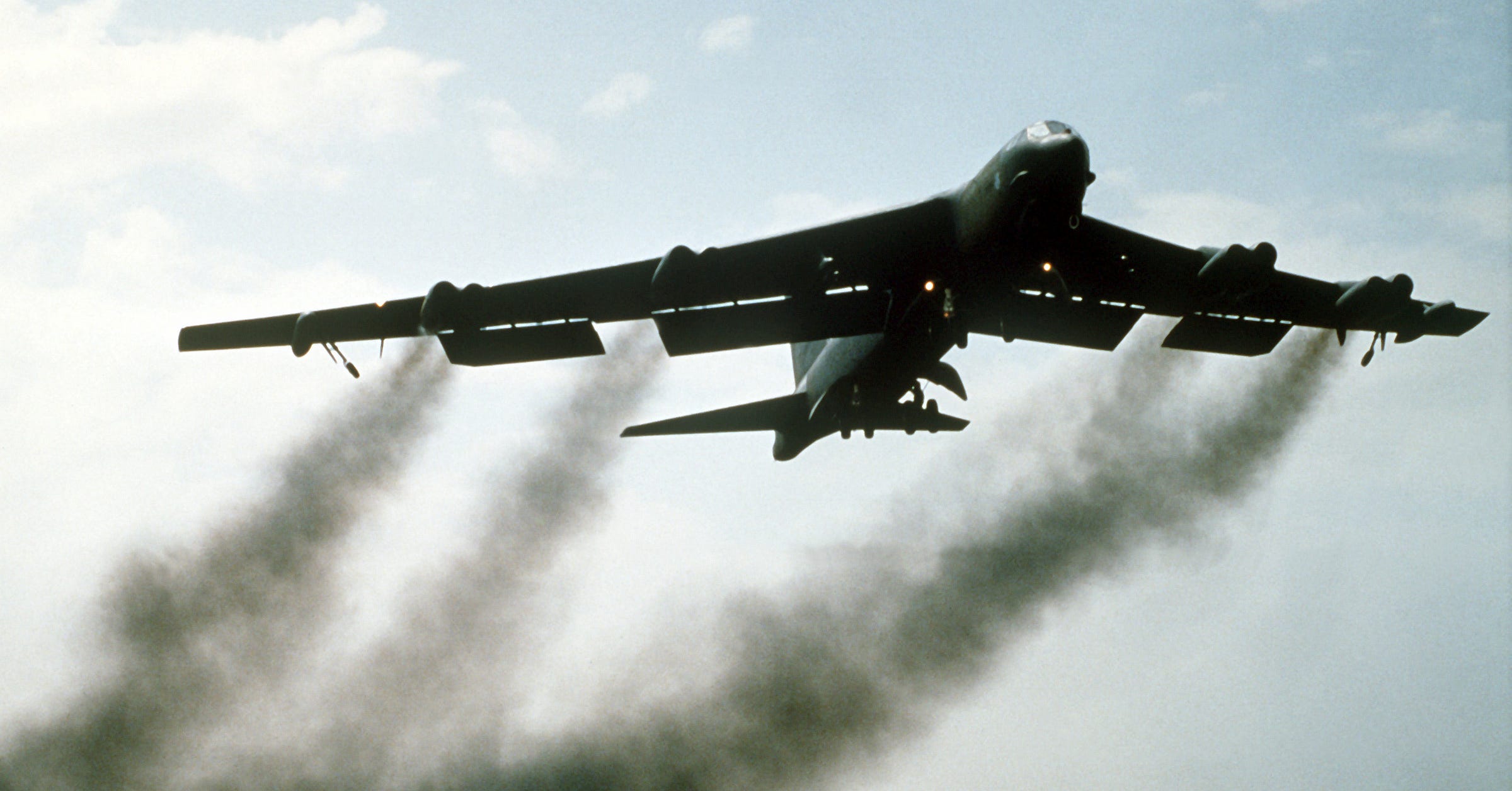The 15,000-Mile Bomber Mission—Or, How U.S. Air Force Heavies Began Crisscrossing the Planet
It took decades, but now USAF bombers can hit anywhere, anytime

The farthest bombing missions carried out by each of the U.S. Air Force’s operational strategic bombers—the Boeing B-52, Rockwell B-1 and Northrop Grumman B-2—all took place in the Middle East and Central Asia over the course of four decades.
During these operations, the Air Force repeatedly demonstrated the unique capabilities of these bombers to traverse entire continents and oceans, often nonstop, to strike distant adversaries with precise and overwhelming firepower.
Evaluating these record-breaking strikes in chronological order reveals some common trends—and evolving capabilities.
Given its age and lengthy service, it’s hardly surprising that the venerable B-52 became the first USAF strategic bomber to carry out a nonstop sortie from the continental United States to the wider Middle East and back.
When Iraq invaded Kuwait in August 1990, the United States began planning for the highly secretive Operation Senior Surprise—nicknamed Secret Squirrel by its participants.
Shortly after Iraqi Pres. Saddam Hussein ignored the U.N. Security Council’s Jan. 15, 1991 deadline to withdraw from Kuwait, seven B-52Gs took off from Barksdale Air Force Base in Louisiana. They headed east over the Atlantic Ocean.
The bombers carried AGM-86C cruise missiles with conventional blast-fragmentation warheads.
The B-52s refueled in mid-air near the Azores and over the Mediterranean. Once over the Middle East and in range of their targets on Jan. 17, they launched the opening salvos of the war—firing 35 AGM-86Cs at power and communications infrastructure across Iraq.
Those AGM-86Cs also made history as the first missiles guided to their targets by GPS.
The bombers again turned west and headed home, refueling on the way and landing at Barksdale 35 hours and 24 minutes after they’d departed. Overall, they flew 14,000 miles nonstop, making theirs the longest bombing mission up to that time.
That impressive record fell five years later.
Keep reading with a 7-day free trial
Subscribe to Trench Art to keep reading this post and get 7 days of free access to the full post archives.


